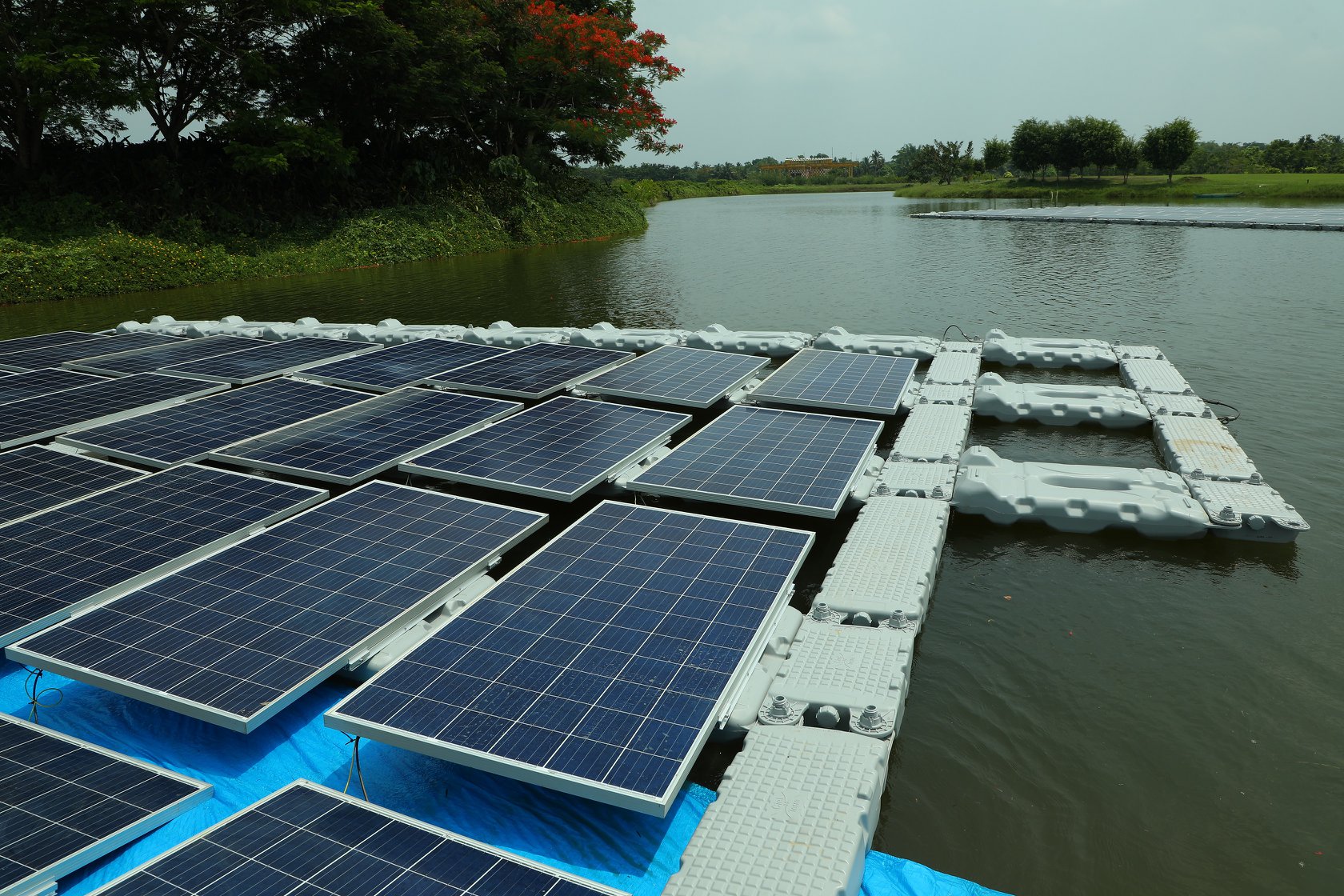India’s aviation sector is soaring—literally. With over 150 million passengers in 2023 and projections to become the world’s third-largest aviation market by 2026, the environmental toll is impossible to ignore. Airports contribute 5% of global aviation emissions, and India’s aviation sector alone emits 20 million tons of CO₂ annually. Yet, amidst this growth, a quiet revolution is unfolding. From Cochin’s solar-powered terminals to Delhi’s wastewater recycling systems, India is pioneering a new model for sustainable aviation infrastructure.
This is the story of how Indian airports are balancing explosive growth with ecological responsibility—and what the world can learn from their experiments.
Cochin International: The World’s First Fully Solar-Powered Airport
In 2015, Cochin International Airport (CIAL) in Kerala made history by becoming the first airport in the world to run entirely on solar power. What began as a 12 MW solar plant has now expanded to 50 MW, generating 200,000 units of electricity daily—enough to power 60,000 homes. On sunny days, the airport feeds surplus energy back into the state grid.
The numbers speak for themselves:
- Reduction in carbon footprint: 300,000 metric tons of CO₂ since 2015 (equivalent to planting 3 million trees)
- Cost savings: ₹500 crore (~$60 million) in electricity bills avoided
- Scalability: 40 acres of solar panels, including floating installations on nearby reservoirs
But CIAL didn’t stop at solar. The airport also:
- Recycles 100% of its wastewater (4 million liters daily) for landscaping and cooling
- Uses LED lighting to cut energy use by 30%
- Implements no-plastic policies and composts 8 tons of organic waste per month
The lesson? A single innovation—solar energy—can catalyze broader sustainability efforts.
Delhi’s IGI Airport: A Megahub Goes Green
Delhi’s Indira Gandhi International (IGI) Airport, handling 70 million passengers annually, faces a unique challenge: scaling sustainability without disrupting operations. Its multi-pronged approach includes:
Energy: From Carbon-Intensive to Net-Zero
- 8 MW solar plant powers Terminal 2
- Hydrogen fuel trials for ground vehicles (in partnership with Tata Motors)
- First Indian airport to join ACA’s (Airport Carbon Accreditation) ‘Level 4+’ (highest sustainability tier)
Water: Closing the Loop
- Zero liquid discharge (ZLD) system treats 10 million liters of wastewater daily
- Rainwater harvesting replenishes 500 million liters annually—enough to fill 200 Olympic pools
3. Waste: From Landfill to Circular Economy
- 70% of waste recycled, including 2,000 kg/day of plastic converted into fuel
- Food waste biodigesters generate compost for airport landscaping
The lesson? Even mega-airports can decarbonize—if they treat sustainability as an operational priority, not just PR.
Mumbai’s Chhatrapati Shivaji Maharaj Airport: The Carbon-Neutral Pivot
Mumbai’s airport, constrained by urban sprawl, turned to smart design and tech to reduce emissions by 50% :
- Hybrid cooling systems cut AC energy use by 25%
- India’s first airport to use regenerative braking in baggage tugs (saving 200,000 kWh/year)
- Carbon-neutral by 2029 (as per Adani Group’s pledge)
Its most innovative move? Vertical gardens along terminal walls—30,000 plants that absorb 1.5 tons of CO₂ annually while reducing indoor temperatures by 3°C.
The lesson? Urban airports can leverage space-efficient green tech to compensate for land limitations.
Noida International Airport (Jewar): The Greenfield Revolution
Slated to open in 2025, Noida International Airport (NIA) is designing sustainability into its DNA:
- 100% renewable energy (solar + wind PPAs with Tata Power)
- Net-zero emissions from Day 1 (a first for India)
- 133 hectares of green belts with native species like neem and banyan
- All-electric ground vehicles (including Mahindra’s EV fleet)
Its Digital Tower—controlled remotely from 50 km away—eliminates the need for energy-intensive ATC buildings.
The lesson? Greenfield projects can leapfrog legacy systems and set new benchmarks.
The Challenges: Why India’s Green Airport Dream Isn’t Easy
Despite progress, hurdles remain:
- High costs: Solar infrastructure requires 20-30% higher capex
- Regulatory gaps: No nationwide mandate for carbon-neutral airports
- Behavioral inertia: Airlines and passengers slow to adopt sustainable practices
Yet, the Airports Authority of India (AAI) is pushing forward:
- 25+ airports to go 100% solar by 2030
- Carbon neutrality targets for all major hubs by 2035
The Future: What’s Next for Indian Aviation?
- Hydrogen-powered airports (Bengaluru’s pilot by 2027)
- AI-driven energy optimization (Delhi’s trial cuts 15% of HVAC loads)
- Sustainable aviation fuel (SAF) hubs (Pune’s partnership with Praj Industries)
As ICAO’s Aviation Environmental Report 2023 notes, India is now a global testbed for scalable green airport solutions.
India’s airport infrastructure is emerging as a global benchmark in combining growth with sustainability. Cochin International Airport leads by example with its pioneering solar energy adoption, becoming the world’s first fully solar-powered airport. Delhi’s Indira Gandhi International Airport has implemented closed-loop water systems and energy-efficient retrofits, demonstrating how existing infrastructure can be optimized for lower emissions. Meanwhile, Noida’s upcoming greenfield airport is embedding sustainable practices from the ground up. These models show that emerging economies can build for expansion while prioritizing renewable energy, water conservation, and green design from the outset.
As Union Aviation Minister Jyotiraditya Scindia declared: “Our airports will be net-zero—not because it’s trendy, but because it’s essential.” For a sector often criticized for its climate impact, India’s green airports are rewriting the rules—one solar panel at a time.





